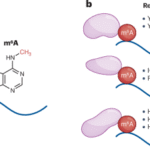ChatGPT, or Generative Pre-trained Transformer, is a powerful language model developed by OpenAI that has been utilized in various scientific research and academic settings. This model, which is based on the transformer architecture and pre-trained on a large corpus of text data, has been used to generate natural language text, perform language translation, and assist in various natural language processing tasks.
One of the key advantages of ChatGPT is its ability to generate human-like text. This has been particularly useful in scientific research and academia, where the ability to generate realistic text samples can assist in various natural languages processing tasks, such as text summarization and text generation. For example, researchers have used ChatGPT to generate abstracts for scientific papers, allowing them to quickly summarize the contents of a paper and identify key findings. Additionally, ChatGPT has been used to generate realistic text samples for language translation tasks, which can be used to train machine learning models to translate text from one language to another.
Another important use of ChatGPT in scientific research and academia is in natural language understanding. The model can be fine-tuned to understand the meaning of the specific scientific or academic text and then used to assist in tasks such as text classification, question answering, and knowledge retrieval. For example, researchers have used ChatGPT to classify scientific papers by topic, allowing them to quickly identify papers of interest. Additionally, the model has been used to answer questions about the scientific or academic text, such as answering questions about the methods used in a particular study or the key findings of a paper.
ChatGPT has also assisted in text-to-speech synthesis, which can be useful in scientific research and academia. For example, researchers have used ChatGPT to generate speech samples for speech recognition tasks, which can be used to train machine learning models to recognize speech. Additionally, the model has been used to generate speech samples for text-to-speech synthesis tasks, which can be used to train machine learning models to generate speech from text.
In addition to these specific uses, ChatGPT has also been used in various scientific research and academic settings. For example, researchers have used the model to generate realistic text samples for natural language generation tasks, such as text summarization and text generation. Additionally, the model has assisted in natural language understanding tasks, such as text classification and question answering.
Overall, ChatGPT is a powerful tool that has been utilized in a wide range of scientific research and academic settings. Its ability to generate realistic text samples and understand the meaning of text makes it a valuable tool for natural languages processing tasks, such as text summarization, text generation, and text classification. Additionally, its ability to assist in text-to-speech synthesis makes it a useful tool for speech recognition and text-to-speech synthesis tasks. As the field of natural language processing continues to evolve, it is likely that ChatGPT will continue to be a valuable tool for researchers and academics in the scientific community.











